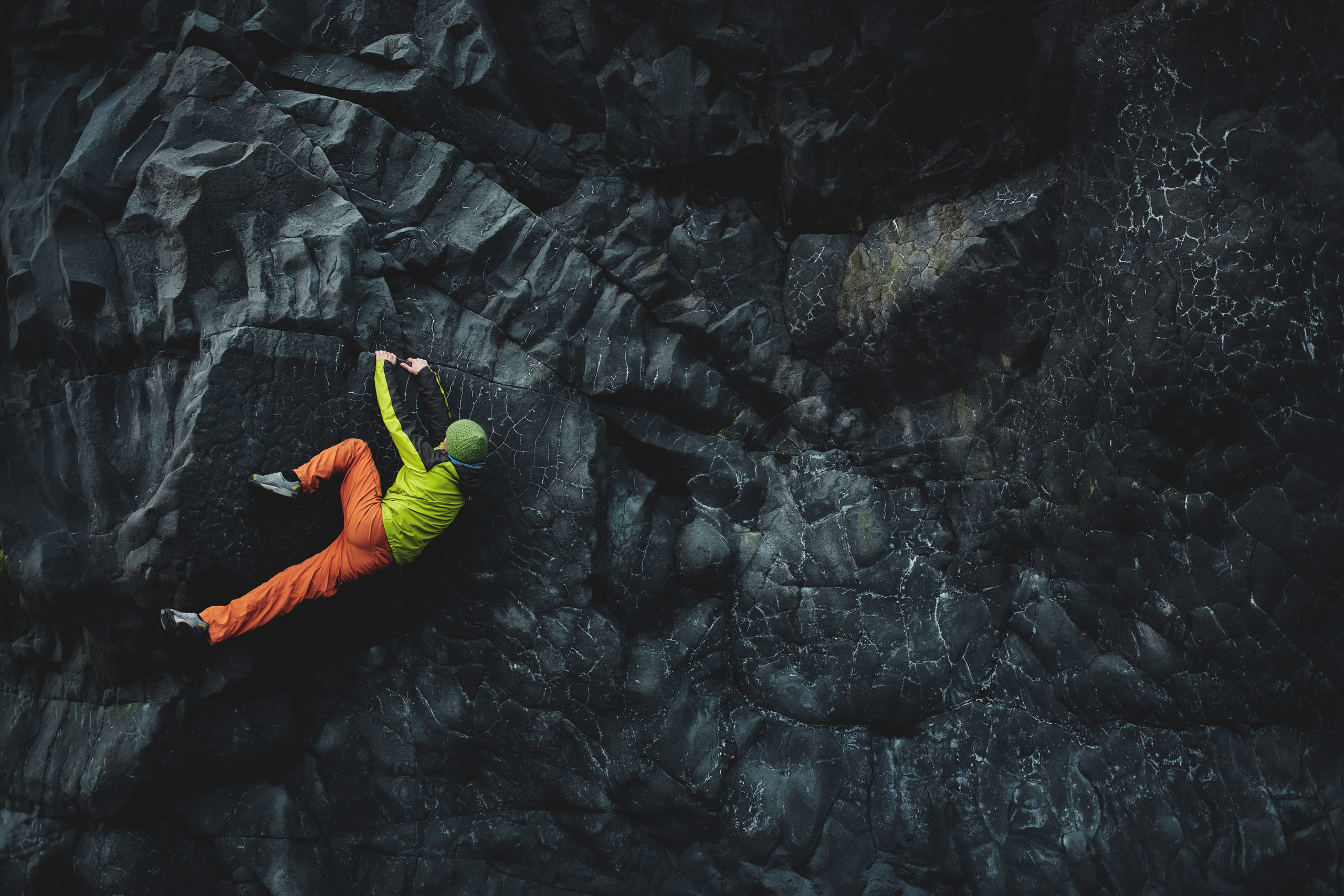It is coming to the late fall/winter season and that means there’s a slightly love-hate relationship with climbing. We love it because the rocks are perfect and there aren’t very many people out at the crag. However, it’s kind of a hate relationship because it’s cold and it’s not as easy to get all the blood circulating to all the limbs while you’re climbing. Today we’re going to go through what you should wear while you’re climbing and while you’re belaying so you can have the best experience possible.
If you get anything out of this article, consider bringing extra layers for when you are belaying that you can take on and off for when you are climbing. That way, you’ll at least be able to re-warm yourself up while you aren’t climbing. That way you can have a long climbing session.
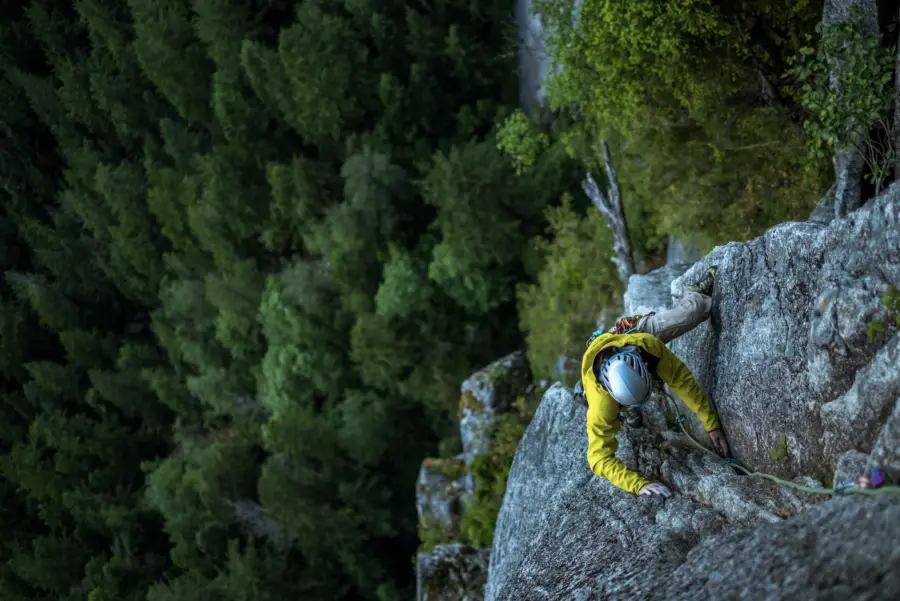
Keeping your Head Warm
One of the most important things to keep warm while climbing in the fall and winter is your head. The reason for this is because you lose a lot of body feet through your head. Because of this, it’s recommended that climbers keep the following on them while they are at the crag:
- Warm Hat: You may want to wear a hat to keep your head warm. Though this can be a great plan, it’s important that it will fit in your helmet. This should be pretty easy as long as you don’t have a little cotton ball on top.
- Ear Muffs: Many climbers also like earmuffs to keep their ears warm. When considering what to wear, it should also fit under your helmet. However, whatever earmuffs that you use, make sure that you can still clearly communicate with your belayer. This means that if you have ear muffs covering your ears, either consider a lighter-weight earmuff or something that is designed specifically to allow sound into your ears.
- Scarf or Buff: In certain parts of the world, scarfs are an obvious addition to keeping you warm. However, there are still many parts, especially in the mid-western United States, where scarfs are commonly used for a fashion statement and aren’t made to be very warm.
If you’re considering a scarf, which I highly recommend, consider getting something that is specific for keeping you warm and not for looking good. Additionally, you’ll likely want something like a buff that’ll keep you warm while not getting in your way while you’re climbing.
The last thing you want is your scarf to get caught on a corner of the rock and cause you to fall while it’s still wrapped around your neck.
Keeping Your Body Warm
Working our way down from the head, the next most important thing that you should consider is keeping your body warm. This is the part that climbers tend to struggle with the most because of the limitations that a lot of clothing has on the mobility of your shoulders. To prevent any issues, consider including the following while climbing in the cold fall or winter:
- Long-Sleeve Base Layer: When it comes to climbing in the fall and winter, a long-sleeve base layer can be a great way to stay warm with the versatility of removing other layers on top when you need to cool down. Additionally, the long-sleeve base layer can protect you from wind, which is common on the side of a cliff.
- Vest: Climbers tend to enjoy vests because you can keep your body warm while having free motion in your shoulders still. For this reason, climbers tend to wear vests throughout the climbing session, even while they’re still climbing. Additionally, there are vests that have electric warming technology to keep you even warmer while you’re climbing or belaying.
- Jacket: Climbers don’t typically wear a jacket on while they’re actively climbing, but it can be helpful to stay warm while you’re belaying or transitioning from watching to climbing. It is probably the easiest and most effective way to warm your body as well (especially if it’s heated).
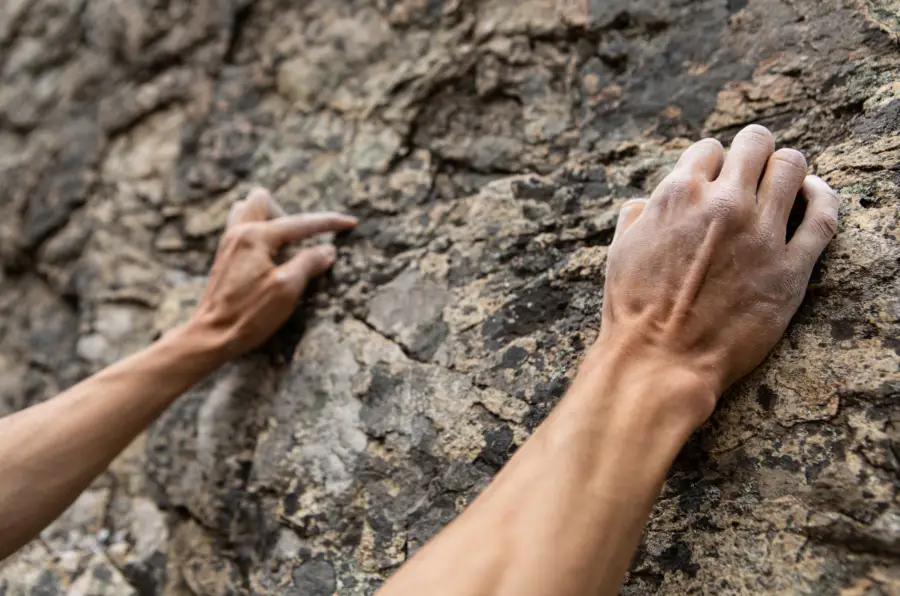
Keeping Your Hands Warm
The most important tool and probably the most difficult to keep warm is your hands. Climbers need warm hands to climb well as that is an indication that you have good blood flow and will be able to grip even the smallest of holds.
- Gloves: Though gloves aren’t typically used by climbers while they’re actively climbing, it is a great way to stay warm while you’re belaying. Additionally, it’s ideal to wear gloves while you are hiking to the crag and while you are waiting to climb or transitioning to-from climbing and belaying.
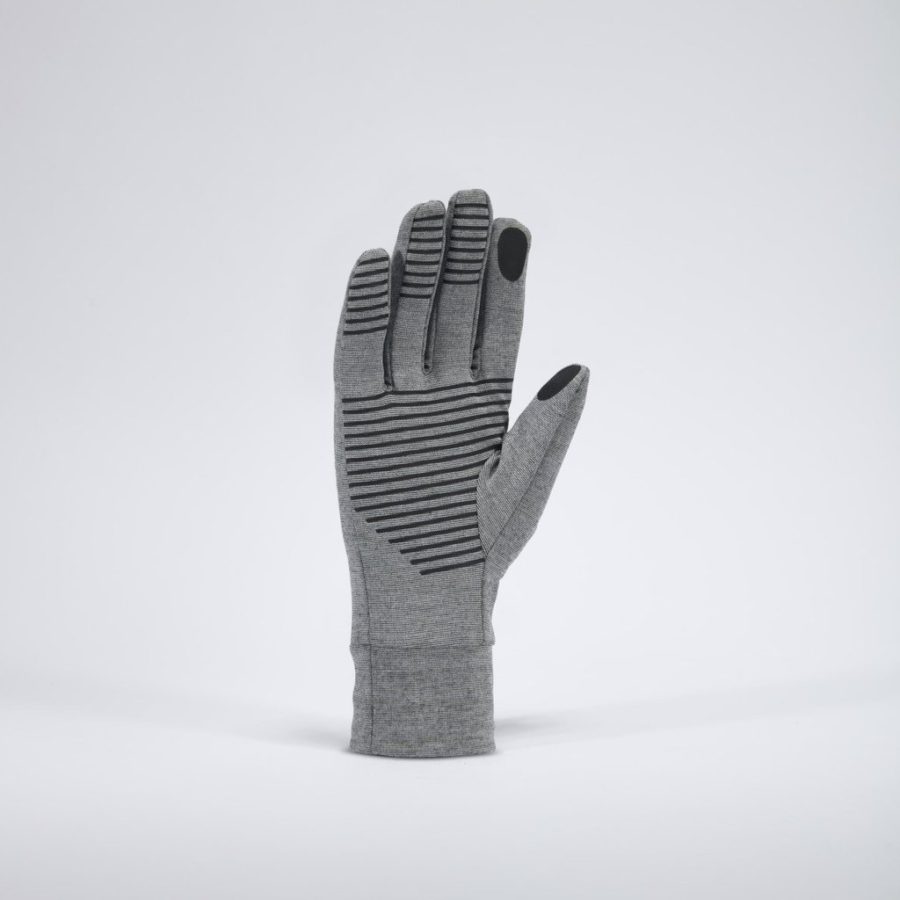
These gloves from Gordini are perfect for keeping your hands warm. The Lodge model is heavyweight weathered knit gloves that are double duty working well as a liner and as well as a stand-alone glove. Plus, they have a printed silicon palm that provides grip, and the thumb and index finger are ready for texting.
- Heat Packs: Heat packs are the climbers secret to successful winter sends. Not only can you put these little heat packs in your pockets, you can also add them to your chalk bag so every time you chalk-up, your hands get reheated.
Keeping Your Legs Warm
Climbers’ legs tend to get neglected when it comes to considering what to wear. This is probably because when climbers look down, they immediately think of their feet, which seems to require more than legs do. That being said, it’s important not to miss these items for climbing in the winter as they can be the difference between regulating your body heat and losing heat unnecessarily through your thighs and calves.
- Leggings: For both men and women, leggings are a great way to get a base layer on your legs and to prevent heat from leaving through your thighs or calves. Plus, some leggings are built with extra insulation, which is perfect for the especially frigid cold.
- Climbing Pants: Climbing pants can be a great barrier between the cold and your legs, especially if they are on top of a pair of leggings. Plus, they are made in a way that enables you to stay flexible with your hips and fully use your range of motion in your legs.
- Wind/Water Repellent Shell: One of the culprits to becoming cold due to what you wear on your legs is if you get wet. For example, ice climbing requires a lot of contact with water. In these situations, wind and water repellent pants can prevent your body from getting wet and thus prevent you from unnecessary water. When considering these types of pants, however, make sure you still have full range in your legs and hips.
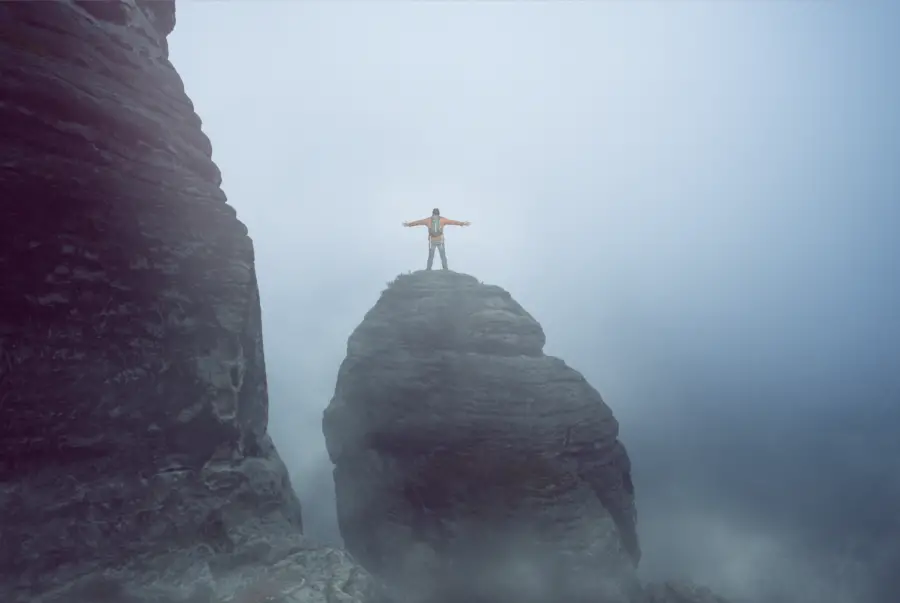
Keeping Your Feet Warm
Besides your head, the most commonplace for body heat to escape your system is through your feet. Because of this, you need to take special consideration to keep your toes warm. Especially since numb toes can prevent you from feeling the rock and prevent you from putting weight on your feet, which is the most important skill in climbing.
- Socks: It is most common for climbers to not wear socks with their climbing shoes. Because of this, climbing shoes are typically too small for a nice pair of warm socks. If possible, consider getting a pair of climbing shoes that allows you to wear socks in the winter months (these can be your winter season shoes). However, if you don’t have the budget for the second pair of shoes, consider wearing a nylon sock – it isn’t much but it will help keep you a little warmer.
- Winter Boots: While you aren’t climbing, you can wear winter boots to keep your feet warm. Sometimes there is even enough space in your winter boots that you could put some feet warmers in there too, which is a great way to bring more heat into your body and prevent your toes from going numb.
As long as you bring layers and items to cover everything listed above, then you should be covered and will be able to stay warm while you’re climbing and belaying. Whatever you do, just try and stay dry – that should help a lot.

